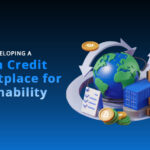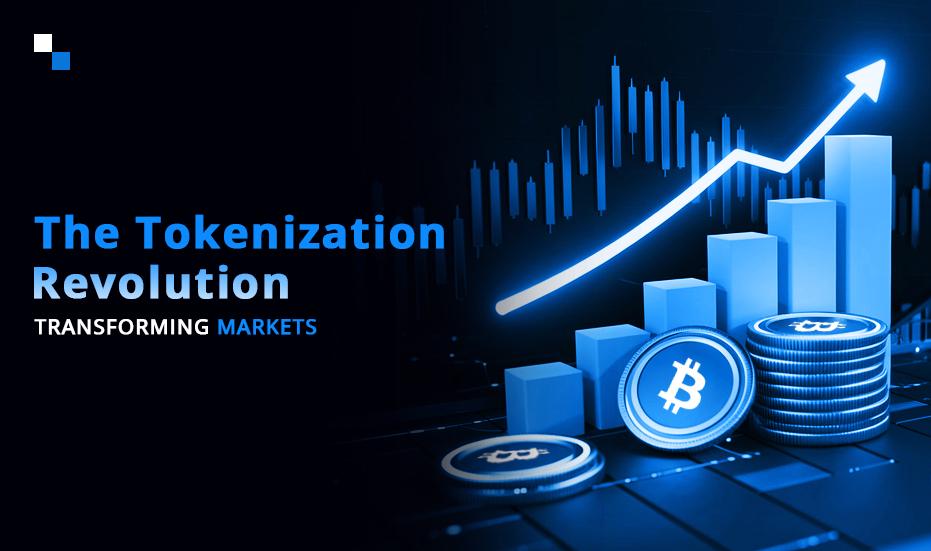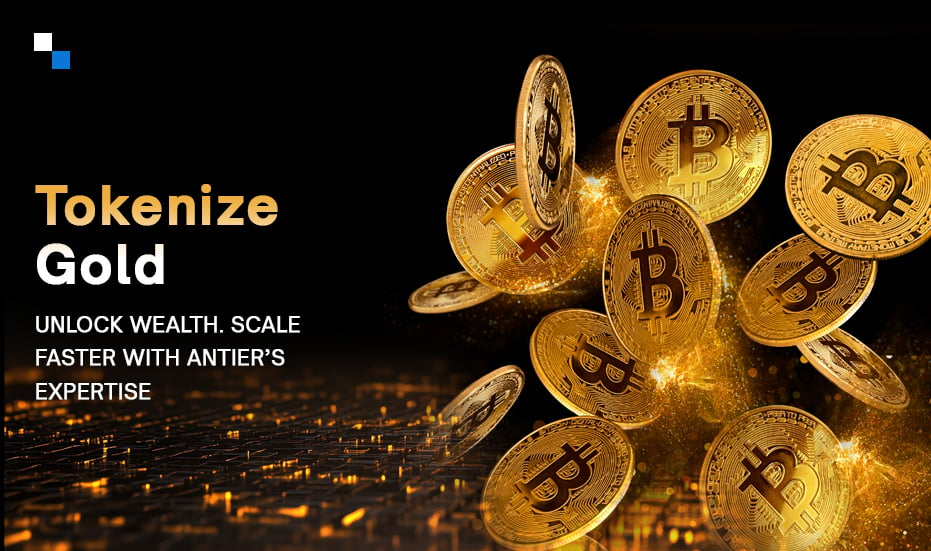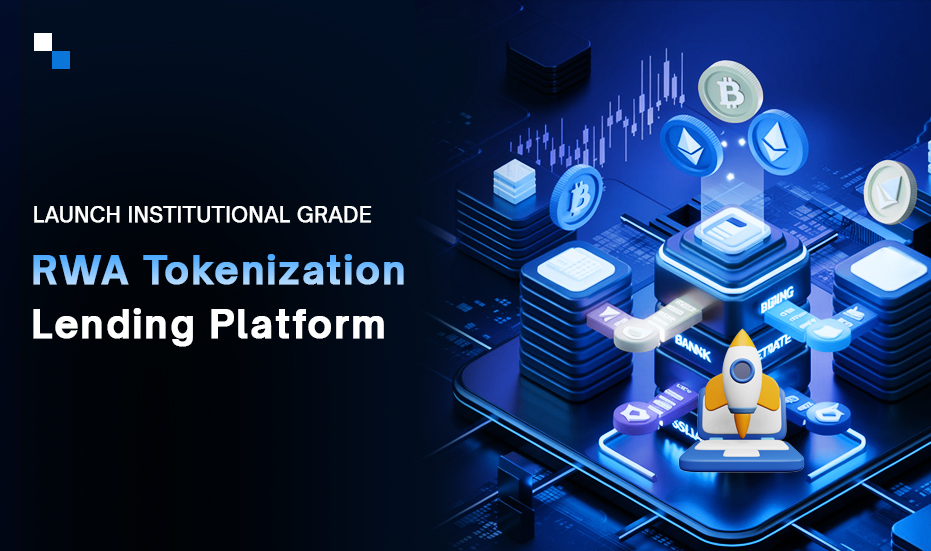
How to Create a Candy Crush Clone in Just 2 Weeks?
January 13, 2025
Decoding Blockchain-based Carbon Credit Marketplace Development in 2025
January 14, 2025The world of finance is undergoing a significant transformation, and one of the key drivers behind this change is the rise of tokenized assets. Tokenization, the process of converting ownership of real-world assets into digital tokens, is gaining traction across various sectors, including real estate, commodities, equity markets, and even art. With blockchain technology as the backbone of this process, tokenized assets promise to reshape how we think about ownership, investment, and market efficiency.
In this blog, we’ll explore the rise of tokenized assets, the benefits they bring to marketplace efficiency, and some key statistics that highlight the growing momentum of this innovative trend.
What Are Tokenized Assets?
For example, a real estate property can be divided into many small digital tokens, allowing investors to purchase fractions of the property rather than the entire asset. This process not only allows for greater liquidity but also democratizes access to assets that were traditionally only available to institutional investors or the wealthy.
The Impact on Marketplace Efficiency
Tokenization brings a range of benefits that improve marketplace efficiency, especially in sectors traditionally burdened by inefficiencies, such as real estate and finance. Here are some of the key improvements tokenized assets bring to marketplaces:
Increased Liquidity
Traditionally, assets like real estate, art, and private equity are illiquid, meaning it can take time to find buyers and sellers. Tokenization allows these assets to be divided into smaller, tradeable units, making it easier to buy, sell, or transfer ownership. This opens up new markets, creating more opportunities for investors and improving the overall liquidity of traditionally illiquid assets.
According to a report by Deloitte, tokenized securities can increase liquidity in markets by up to 40% due to their ease of transfer and fractionalization.
Faster and More Efficient Transactions
Tokenized assets are built on blockchain technology, which offers faster, more secure transactions. Traditional transactions often involve multiple intermediaries, such as brokers, clearinghouses, and banks, each adding cost and delay to the process. Tokenized assets, however, can be transferred directly between buyers and sellers with the help of smart contracts, which are self-executing contracts with the terms of the agreement directly written into code.
In 2021, PwC reported that the tokenization of assets could cut transaction times by as much as 90%, dramatically improving efficiency in sectors like real estate and financial markets.
Lower Transaction Costs
The reduction in intermediaries also leads to a decrease in transaction costs. In traditional markets, intermediaries charge significant fees for their services, from brokers to banks. With tokenization, many of these intermediaries are replaced by smart contracts, which execute transactions autonomously. This reduces fees and makes investing more cost-effective, especially for smaller transactions that might otherwise be economically unfeasible.
A study by Goldman Sachs indicates that tokenized assets could reduce transaction costs by up to 50%, making the investment process much more efficient for both individual and institutional investors.
Global Access and Inclusivity
Tokenization makes markets more accessible to a wider range of participants. By breaking down assets into smaller, more affordable units, investors from around the world can participate in markets that were previously inaccessible. This democratization of access helps create more diverse and inclusive investment opportunities, leveling the playing field for retail investors and opening up markets to previously underserved regions.
According to Cointelegraph, the global tokenization market is expected to grow at a compound annual growth rate (CAGR) of 25% between 2021 and 2026, with many investors eager to tap into emerging markets through tokenized assets.
Enhanced Transparency and Security
Blockchain technology, which underpins tokenization, provides enhanced transparency and security. Every transaction involving tokenized assets is recorded on an immutable ledger, meaning that it is transparent and can be audited at any time. Additionally, blockchain technology uses cryptographic methods to ensure the security of transactions, reducing the risk of fraud and improving trust in the marketplace.
According to IBM, blockchain-based tokenization can reduce fraud by up to 80% compared to traditional systems, making it a more secure and reliable alternative for trading assets.

The Growth of Tokenized Assets: Key Statistics
The rise of tokenized assets is not just a trend; it’s a rapidly growing movement that’s gaining traction across industries. Here are some statistics that highlight the growing momentum of tokenization:
- Market Size and Growth: The global market for tokenized assets is projected to reach $24 trillion by 2027, according to a report from MarketsandMarkets. This represents a significant increase from just a few billion dollars in 2020, demonstrating the rapid adoption of tokenization across various sectors.
- Real Estate Tokenization: Real estate tokenization is one of the most significant areas for growth. In 2021, the value of tokenized real estate assets reached $2.5 billion, and this figure is expected to grow by more than 30% annually over the next few years. This growth is driven by increased interest from institutional investors and the potential for retail investors to access previously inaccessible markets.
- Tokenized Securities: Tokenized securities, including stocks, bonds, and other financial instruments, are also gaining traction. According to CB Insights, the total value of tokenized securities could surpass $1.2 trillion by 2030, fueled by the increasing integration of blockchain technology in financial markets.
- Adoption by Financial Institutions: Many financial institutions are jumping on the tokenization bandwagon. In 2021, Citigroup and Goldman Sachs both made significant investments in blockchain technology and tokenization platforms, signaling the growing acceptance of tokenized assets in traditional financial markets.
Conclusion
The rise of tokenized assets is one of the most exciting developments in the world of finance. By enhancing liquidity, reducing transaction costs, and increasing transparency, tokenization has the potential to revolutionize markets and improve efficiency. As the technology continues to mature and adoption increases, the impact of tokenized assets will be felt across industries, creating new opportunities for investors and improving market access for all. With the market for tokenized assets expected to grow exponentially in the coming years, it’s clear that we are just scratching the surface of this transformative trend.
As the marketplace continues to evolve, tokenization could ultimately become the norm, reshaping the way we think about ownership and investment in the digital age.




